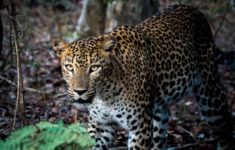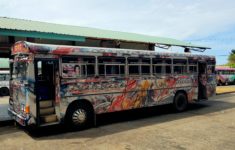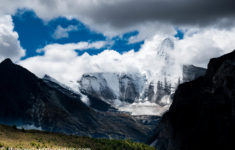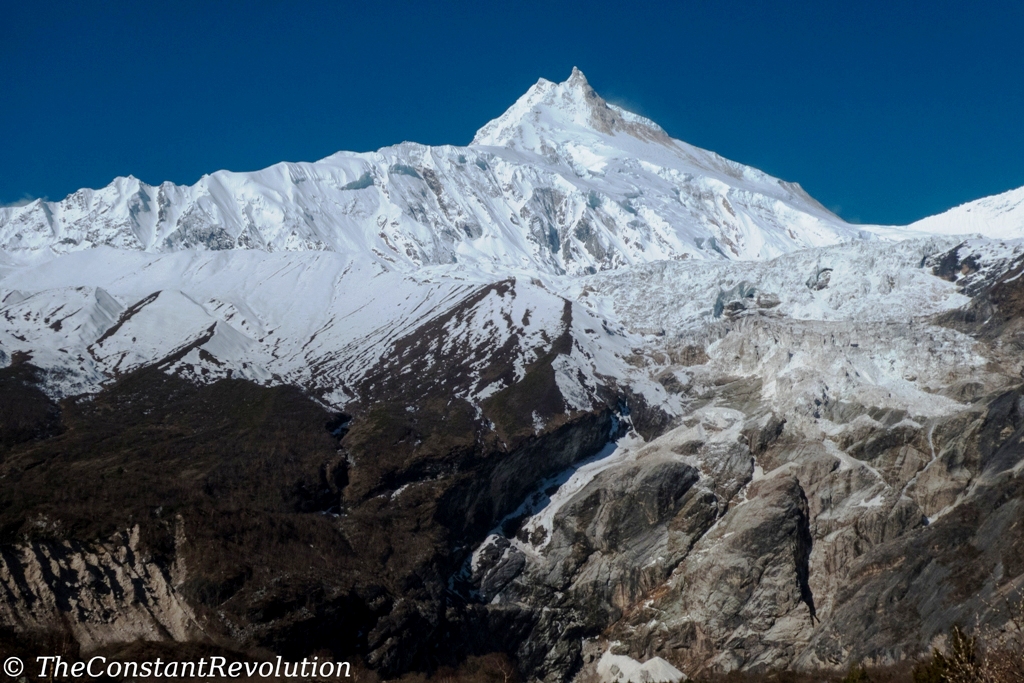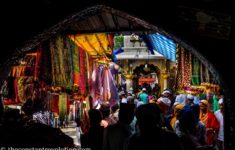Long windy beaches, lots of wildlife on land and in the seas, great hiking opportunities, and the best cultural heritage highlights of Sri Lanka all in a two weeks round trip starting from and returning to Colombo. Here are all the sites and many tips along the way.
Sri Lanka is a small country, but there’s so much to do and see, and it has a history that goes back thousands of years. So, if you are tight on time, let’s say, you’ve got a couple of weeks, it might be hard to pick an itinerary that will give you as much as possible of what the country has to offer.

The itinerary described here covers almost everything, and it actually covers all highlights if you manage to squeeze in an extra stop, as explained further below.
It certainly covers East and West coasts, where you can kite-surf or go for dolphins and blue whales watching. It passes by Wilpattu and Minneriya, two of the most beautiful national parks out of the many you can visit in Sri Lanka. Most importantly, if you are the culturally oriented type, this itinerary will take you to at least four out of the eight World Heritage sites in Sri Lanka, in places such as Anuradhapura, Polonnaruwa, Sigiriya, and Dambulla.
If you want to know about how transport works in Sri Lanka click on the link, otherwise here we go:
COLOMBO – 2 days
Departing point for every Sri Lankan trip, Colombo is not the most beautiful of cities. I still spent a couple of days there as I needed to extend my visa and make a Sri Lankan Driving license, necessary if you want to self drive in the country. So, I tried to make the most out of it.
As I always do in cities, I randomly walked around, sometimes in an unknown neighbourhood, to try some local food and just check out life outside touristic areas. But I have also visited some places: I went to the Fort Area to check the colonial buildings, then at Galle Face for some cheap and tasty street food, then I checked Gangamaraya Temple (a small but important Buddhist temple), then I visited the National Art Gallery (a small collection of quite random paintings, free entrance) the National Museum of Natural History with a nice American girl I met (I had to show how much I love culture).
And that’s it, I believe it’s enough for Colombo. You can go around using Uber or Pick-me Apps, very cheap especially if you take the Tuk-Tuk option.

Oh yeah, at the port area I entered a kind of Maritime Museum, but I didn’t go to the museum. Instead, I went up a few flights of stairs to a viewpoint tower and I discovered a bridge connects the tower to Sambodhi Chaitya, a Buddhist stupa with painting all over the inside walls describing the life of the Buddha, and a view outside over the port and the many containers stocked there. I was there on my own, pretty cool.
KALPITIYA – 2 days
From Colombo, I moved to Kalpitiya, up north, with a train until Plaviya and then by bus. Kalpitiya is a famous spot for kite surfing and dolphin watching. I did neither as the season was kind of ending when I was there, so little wind and kite surfers around, and I found the dolphin watching tour too expensive (70 USD for me alone).

Instead, I found out there was a music festival with vegan food and the like, and I just hung out there for a couple of days, yay! The long sandy beaches are nice though and will gift you with some beautiful sunsets.
WILPATTU NATIONAL PARK – 2 days
Not too far from Kalpitiya, you can reach Wilpattu National Park, the biggest NP in the whole country.

There are two places where you can stay to organise a safari in the park. The first is to use an entrance on the south-west side, very close to the sea and to Kalpitiya. The second is to use the entrance on the south-east side. This is the most common option, and the one I recommend for the simple reason that there are more options for accommodations there, and more probability to team up with someone else to share the costs for the safari.
If you are travelling by bus, when you will be in Puttalam some people on the street will try to tell you to remain there and organise the safari to Wilpattu NP from there. However, while the stay would be cheaper, the safari would cost the same, and frankly speaking the area outside the park entrance is just as beautiful and worth a visit on its own. I stayed in a guesthouse in the area, and I went for a walk in the afternoon and around sunset in the surrounding countryside. It was a big highlight of my two days stay.

Indeed, the safari does not change at all, it doesn’t matter on which side you get in. It doesn’t matter who you do it with neither, they all go to the same places, they are all kind of in contact with each other and they tell each other if they have spotted something big like a leopard or elephants, they all go to the same breakfast and lunch areas.
So, the only thing that changes is really the price, and that depends on how many people there are on the car, and a little bit of negotiating skills. In any case it can range between about 40 USD up to 80 USD or more per person for a full day safari. As usual in safari places, there are luxurious and super expensive options too.

As for the park, I found it really beautiful! It is totally worth going for the full day to try and maximise your time there and what you can spot. The whole range of Sri Lankan wildlife lives in Wilpattu, including elephants, leopards and sloth bears, which are normally the tree species most sought after.
However, it isn’t always easy. On my day there we just missed the elephants; we saw a leopard but from very very far, only through binoculars; but we saw a sloth bear mother with her cub from really close, the highlight of the day, and towards the end of it. Otherwise, we saw many crocs, many different types of birds, mongoose, spotted deer, buffaloes, monkeys etc…

All in all, Wilpattu is one of the best places to visit for wildlife spotting, and because most of the people head south for national parks here there’s a little less traffic and jeeps around. I believe there were like 25 to 30 jeeps on the day I went in, nothing compared to the 200 to 400 you might come across in other National Parks such as Minneriya or Yala.
THE ANCIENT CAPITAL OF ANURADHAPURA – 1 day
From Wilpattu to Anuradhapura is just a short bus ride, you could just stay one night. The city is pretty big and messy, but it is one of the ancient capitals of Sri Lanka, famous for its well-preserved ruins of an ancient Sri Lankan civilization, the first of the UNESCO heritage sites encountered on this itinerary.
It was the third capital of the kingdom of Rajarata, following the kingdoms of Tambapanni and Upatissa Nuwara, and the centre of Theravada Buddhism for many centuries. Anuradhapura is also one of the oldest continuously inhabited cities in the world. The ancient city, considered sacred to the Buddhist world, is today surrounded by monasteries covering an area of over 41 square Km.
THE BLUE WHALES DILEMMA – 2-3 days
After a cultural visit, you can head towards the East coast to the town of Trincomalee. Well, not exactly there, the town is pretty ugly, but you can stay a little further up north at Nilaveli if you like it quiet, or at Uppuveli for a little more movement in terms of beach bars etc. Do not expect great nightlife here though.
The coastline is full of ugly building and constructions unfortunately and the long beaches are quite dirty. Like everywhere in Asia, if it isn’t a private property with careful ownership, beaches are full of plastic and rubbish.

This area is famous for two reasons mostly: snorkelling at Pigeon Island, which I absolutely recommend as a nice half a day trip; and going for Blue Whale watching, for which, I must admit, I have mixed feelings if not negative.
And here is why:
There aren’t many places in the world where you can see blue whales, Sri Lanka is one of them, and in Trincomalee, you can find the less busy and cheapest whale watching tours. You can go on a small boat (6-8 passengers) for about 20 USD very early in the morning and the chances to spot some whales are quite high. It is very tempting, I mean, what’s more beautiful than the biggest and gentler mammal in the world?
The boat would drive around, quite far from the coast, where the waters are very deep and full of nutrients, and warm. If you want you can jump in for a swim. Some tourists were all equipped to try and swim with the whales, which is neither easy nor advisable if you are not an experienced diver and don’t know how to behave specifically around whales. There would be many other boats around, depending on the day 20 or 30 or more. Then a whale would be spotted and all boats would run towards her at full speed, making a huge noise with their big engines.
Now, whales aren’t there to show themselves to us, they are there to feed, and all that noise messes up with their localisation system consequently disturbing them on their feeding grounds. They might not be able to feed or even get lost, or give up as long as there is so much noise around. In other words, by going and chasing them that way we are deeply disturbing them.
I am not against wildlife observation, but there are ways and ways. Just like scuba divers do, it would be much better to pick a spot, gently drive around a little, and if you are lucky a whale passes by, if you are not that’s it, that’s nature, that’s life. No need for chasing them like freaking madmen on the ocean and making all that noise, also because the poor whales just dive deep and never come back when that happens. I can’t blame them!
As usual, human beings are spoiled, they want to see at any cost, they don’t take into account the consequences of their actions when interacting in nature and with nature. Tour operators in Trincomalee (but not only there: I have heard of worse scenarios in the South of the country), to put it shortly don’t give a shit, as long as they get the money. Until when the whales will decide to fuck off of course, or worse they’ll die. Then they’ll all be out of business, and they will have deserved it! But at that point it will be too late for the whales.
In the end, me too I went for this tour, unfortunately. We saw only a couple of whales and from quite far that day. They disappeared as soon as the chase started. I am glad, although I would love to have a close encounter with one of these animals, I definitely do not want it that way. From now on before doing something like this I will ask the details on how it is done, and if I find it unfair towards the animal, I won’t do it.
SIGIRIYA THE LONGEST STAY – 4 or 5 days
From Trincomalee, the best thing to do in my opinion is to go to Sigiriya, which can be used as a base for several day trips of different nature around the area. I would choose Sigiriya for this because of all places is the smallest, quietly surrounded by nature, and the one with the best vibe overall. There are many nice guesthouses and hostels, restaurants and bars, some with dancing parties as well.
Furthermore, Sigiriya is itself one of the most visited spots in Sri Lanka, the second UNESCO World Heritage site of this itinerary, and also considered the eighth wonder of the world (featured image).
Sigiriya literally means Lion Rock, and indeed there is a 200 m. high, vertical lava formation from a long extinct volcano, with a citadel at its top, and also famous for its ancient frescoes. Sigiriya is thought to be inhabited since prehistoric times.
Lion Rock can be climbed through a series of steps in about one hour, although the entry ticket is quite expensive, about 30 USD. I didn’t do it, and in general I was quite pissed in Sri Lanka about having to pay this kind of money for every little thing to visit.
Alternatively, you can climb Pidurangala, another rock just close by, for a much cheaper price, about 3 USD, and check also its temple and caves. I recommend to go for sunrise, and from there you can get many nice photos of Lion Rock too.

A less touristic activity to do in the surroundings is to go pass some time on the shores of Talkote Lake, and take a bath as locals do. Very few tourists there.
From Sigiriya you can of course decide to go and spend your nights in some other spots, but I believe the best way is to remain here and go for day trips to the following locations:
Polonnaruwa
The third UNESCO World Heritage site of this itinerary, Polonnaruwa is the second most ancient of Sri Lankan Kingdoms, and it was capital of the country from the 11th to the 13th century. The ruins of the ancient cities date back from the 10th century, when the Chola kings of southern India invaded Sri Lanka. It’s a very interesting day trip from Sigiriya, although it might take a while with a bus, like one and a half hour. It might be better to have a driver for this. Tuk-Tuk drivers or car drivers can be rented for the whole day. Alternatively, it is possible to sleep there too.
The Elephants of Minneriya
After a couple of cultural visits, you might want to take a break, and it so happens that nearby Sigiriya there’s Minneriya National Park.

I’ll be honest here: Minneriya is not a beautiful national park as such, especially if compared with others in Sri Lanka, nor it is the most diverse in terms of wildlife. In fact, there’s very little diversity. Furthermore, there’s a lot of people, the day I was in at least 200 jeeps.
BUT, and this is a big but, it is most likely the best place on the whole Asian continent where to see big families of wild elephants.
There are as many as 300 or more elephants in the park, and it is very easy to see them. I have seen at least 60 elephants the day I went in. So, if it is the elephants you want to see, I do recommend doing a safari in Minneriya. Any guesthouse would organise it for you, or you can also go straight at the entrance and some tour operators will be happy to receive you.

The usual rule applies: the more people on the car the less expensive the safari. Otherwise, it is kind of the same price of all the other national parks for the entrance ticket and the rental of the jeep with a driver. In the end, it comes down to something between 40 and 80 USD per person. It doesn’t really matter who you do it with, seeing the elephants is easy and the jeeps all follow the same routes.
Dambulla’s Cave Temples
The last day out from Sigiriya is a visit to the largest and best-preserved cave temple complex in Sri Lanka, in Dambulla. This is also the fourth UNESCO heritage site of this itinerary. A sacred pilgrimage for 22 centuries, the temple has Buddhist mural paintings covering an area of 2,100 square metres, and more than 150 Buddha’s statues. The city is only 30/40 min by bus away from Sigiriya, and the trip could be made much faster if you hire a Tuk-Tuk or if you have your own means of transport.
This also concludes the itinerary, the only thing left to do is to go back to Colombo…
However, I am a kind of slow traveller, I take it easy here and there, and I don’t even do everything that is suggested by the guides. If you are instead a fast traveller and you manage to squeeze in another stop before going back to Colombo, or if you want to skip some of the above, such as one of the national parks, or Colombo altogether, then there’s a last awesome place to visit, which would make this a really complete itinerary for Sri Lanka.
Indeed, the itinerary as described above does not cover any mountainous area, and Sri Lanka is also famous for its hikes and tea plantations. So:
CULTURE AND NATURE IN KANDY
I didn’t go, to tell the truth, because I went hiking somewhere else, and I had far more time than two weeks. Yet, I know Kandy is one of the greatest place to visit in Sri Lanka, and it is a short detour from Sigiriya.

There’s a plethora of outdoor activities you can organise from there, including hiking the Knuckles range, Kadugannawa hills, Hanthana mountains, Udawaththa forest and much more. If this wasn’t enough, the Sacred City of Kandy would be the fifth UNESCO heritage site of the itinerary. The only issue here would be that Kandy deserves a little more time than a quick stop and go. For example, the whole Trincomalee part could be skipped, and go instead here, depending on your taste and what you like to do.
Now the itinerary is really over, plenty to do in 15 days in Sri Lanka. There are many other hikes, mountains and national parks to visit in the south, let alone all the surfing areas, but that’s for another itinerary.


